You’ll grow a certain fondness for the
highly-urbanized city of Pasay once you get to explore its maze of highways,
byways, overpasses and alleys; wander around its humongous malls, hotels, casinos and
complexes; and scour its fascinating historical landmarks and attractions. I
should know having made it there on several occasions.
 |
| Mall of Asia (MOA) Arena, one of Pasay's humongous landmarks |

 Here’s a place that surprises you with something new, exciting and mind-boggling each time you visit it. Here’s a place that uplifts you, comforting you whenever you’re down and out. Here’s a place that induces like a hallucinogen, helping you escape reality, albeit for a while. Here’s a place that thrills and fascinates you, taking care of your boredom as you pass time for hours. Yes, this city is the perfect escapist’s paradise!
Here’s a place that surprises you with something new, exciting and mind-boggling each time you visit it. Here’s a place that uplifts you, comforting you whenever you’re down and out. Here’s a place that induces like a hallucinogen, helping you escape reality, albeit for a while. Here’s a place that thrills and fascinates you, taking care of your boredom as you pass time for hours. Yes, this city is the perfect escapist’s paradise! 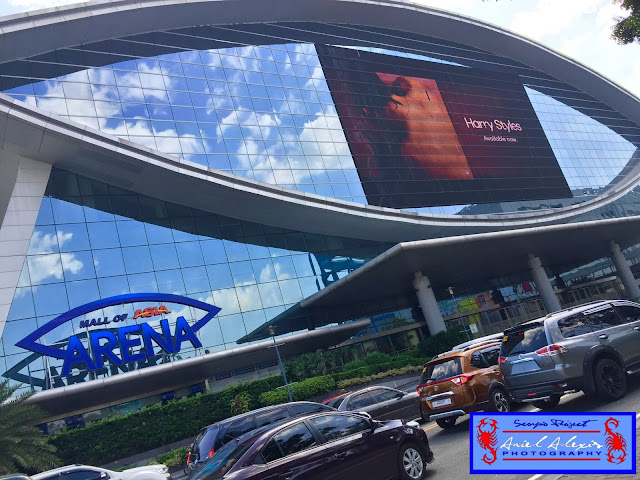 |
 |
| A glimpse of Metro Manila from the air |
 |
| A section of Roxas Boulevard in Pasay |
 Time was when this "paradise" became a hellhole, gaining notoriety as a “sin city” where the sex trade flourished. Prostitution dens disguised as night clubs, bars and pub houses sprouted like mushrooms. Criminality was also on the upswing. These, however, are things of the past. Through the years, Pasay has metamorphosed into one of Metro Manila’s bustling centers of trade, commerce and tourism.
Time was when this "paradise" became a hellhole, gaining notoriety as a “sin city” where the sex trade flourished. Prostitution dens disguised as night clubs, bars and pub houses sprouted like mushrooms. Criminality was also on the upswing. These, however, are things of the past. Through the years, Pasay has metamorphosed into one of Metro Manila’s bustling centers of trade, commerce and tourism.  |
 |
| A glimpse of the CCP complex at night |
 |
| Star City sizzles at night |
 |

 Today’s Pasay is the survivor of the ravages of time and tide, an amalgamation of the past, the present and the future; the old, the new and the soon-to-be; the classic, the contemporary and the cosmopolitan. There’s the old Pasay whose remains were once the exclusive community of some of Manila’s privileged gentry, especially during the pre-war and early post-war eras, who have long moved out to other upscale and quieter neighborhoods or gone abroad.
Today’s Pasay is the survivor of the ravages of time and tide, an amalgamation of the past, the present and the future; the old, the new and the soon-to-be; the classic, the contemporary and the cosmopolitan. There’s the old Pasay whose remains were once the exclusive community of some of Manila’s privileged gentry, especially during the pre-war and early post-war eras, who have long moved out to other upscale and quieter neighborhoods or gone abroad. |
 |
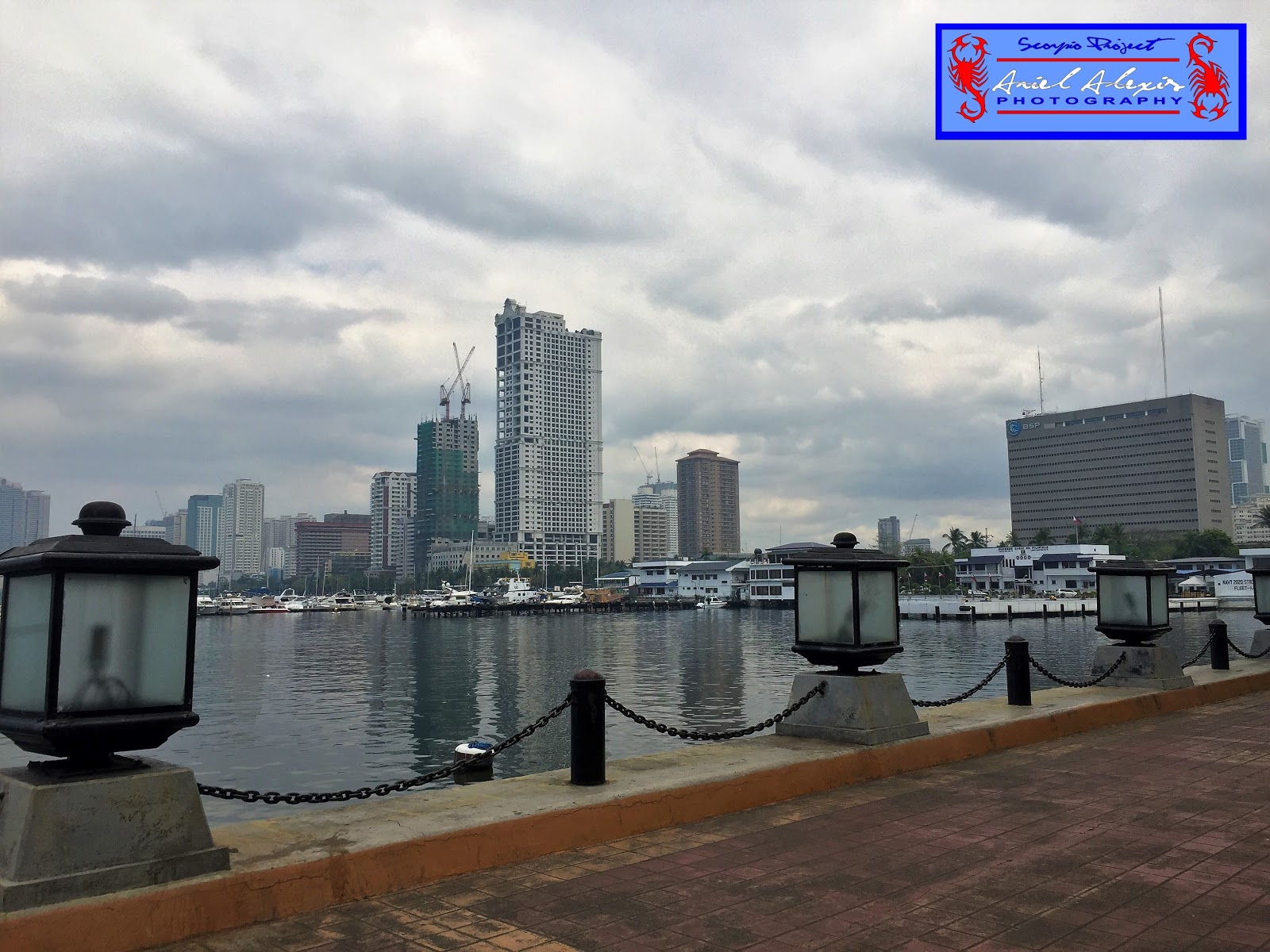 |
 |
 |
| Legaspi Towers 300 and Hotel Jen (formerly known as Traders Hotel) |
 |
| Sunset at Manila Bay |

 Whenever
I make it to the metropolis, I usually billet myself in any of the hotels
within the Pasay-Manila-Parañaque area given its accessibility to the airport. On
top of my list is Pasay, which houses the hangars of the country’s top airlines,
particularly Philippine Airlines and Cebu Pacific, at the Ninoy Aquino
International Airport (NAIA), whose location it is sharing with nearby
Parañaque City. Both of NAIA’s Terminals 2 and 3 as well as the terminal of the
Manila Domestic Airport are located in Pasay.
Whenever
I make it to the metropolis, I usually billet myself in any of the hotels
within the Pasay-Manila-Parañaque area given its accessibility to the airport. On
top of my list is Pasay, which houses the hangars of the country’s top airlines,
particularly Philippine Airlines and Cebu Pacific, at the Ninoy Aquino
International Airport (NAIA), whose location it is sharing with nearby
Parañaque City. Both of NAIA’s Terminals 2 and 3 as well as the terminal of the
Manila Domestic Airport are located in Pasay.  |
| Hotel Jen's towering height |
 |  |  |
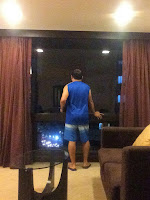
 Then there’s the modern Pasay which wallows in urban blight, congestion and decay brought about by the rise of the urban poor who have ventured into the metropolitan areas in search for better opportunities. And lastly, there’s the futuristic Pasay, which is touted to be the locus of the city’s future, where the spate of development has been taking place almost incessantly, particularly at the reclaimed area of Manila Bay, aptly dubbed as Bay City. Altogether, this is the Pasay that I’ve grown fond of, warts and all.
Then there’s the modern Pasay which wallows in urban blight, congestion and decay brought about by the rise of the urban poor who have ventured into the metropolitan areas in search for better opportunities. And lastly, there’s the futuristic Pasay, which is touted to be the locus of the city’s future, where the spate of development has been taking place almost incessantly, particularly at the reclaimed area of Manila Bay, aptly dubbed as Bay City. Altogether, this is the Pasay that I’ve grown fond of, warts and all.
 |
 |
 |
 |
 |
| A glimpse of the CCP Complex and Manila Bay |

 Pasay
is also known for its share of tourist attractions and entertainment hubs
located along Roxas Boulevard. For one, Pasay is home to the second largest
mall in the Philippines, SM Mall of Asia, which is also where the SMX Convention
Center (SMXCC), MOA Arena, and Esplanade, among others, are found. A stone’s throw
away from the SMXCC is the Archdiocesan Shrine of Jesus, the Way, the Truth and
the Life.
Pasay
is also known for its share of tourist attractions and entertainment hubs
located along Roxas Boulevard. For one, Pasay is home to the second largest
mall in the Philippines, SM Mall of Asia, which is also where the SMX Convention
Center (SMXCC), MOA Arena, and Esplanade, among others, are found. A stone’s throw
away from the SMXCC is the Archdiocesan Shrine of Jesus, the Way, the Truth and
the Life.
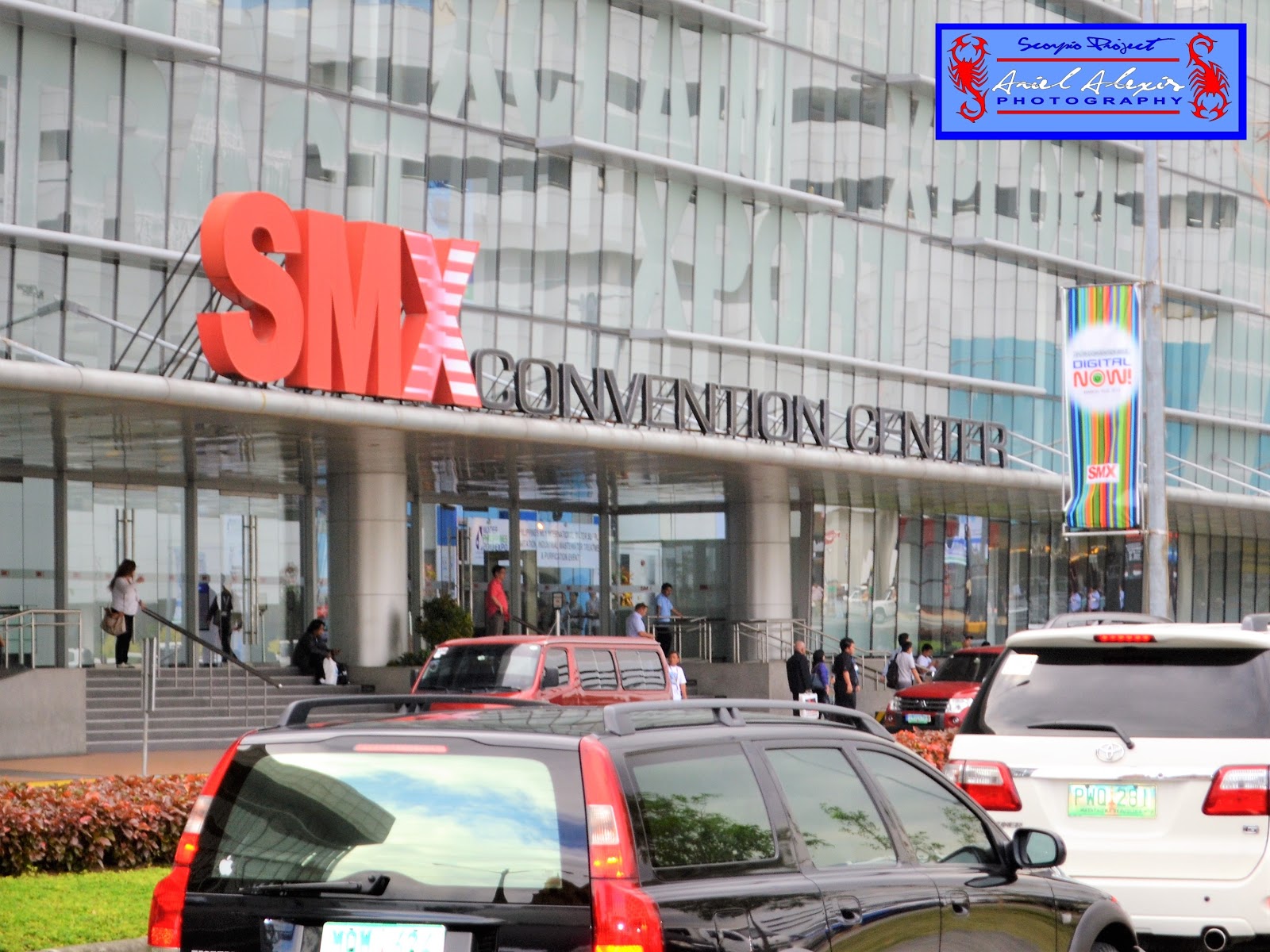 |
 |
 |
 |
 |
 |
 |
| The iconic edifice of the CCP |
 |
| The iconic "floating building" of the CCP |
So,
weekend warriors, add Pasay to your list of must-see cities whenever you’re in
Metro Manila. If you make it there, embrace this fascinating multi-faceted destination
as you take a peek at some of its fascinating attractions:




Cultural Center of the Philippines (CCP)
If you’re a culture vulture, the Cultural Center of the Philippines (CCP) is definitely a must-see. Built by the late Leandro Locsin, National Artist for Architecture, the CCP was a brainchild of former First Lady Imelda Marcos who wanted it to be a center for art and culture in the country. Catch the shows ranging from ballet to opera, or take a peek at the galleries to see the masterpieces of some local and popular artists.
If you’re a culture vulture, the Cultural Center of the Philippines (CCP) is definitely a must-see. Built by the late Leandro Locsin, National Artist for Architecture, the CCP was a brainchild of former First Lady Imelda Marcos who wanted it to be a center for art and culture in the country. Catch the shows ranging from ballet to opera, or take a peek at the galleries to see the masterpieces of some local and popular artists.
 |
| A nice park near the Folk Arts Theater grounds |
Folk Arts Theater

Not to be missed when you’re in the CCP Complex is Tanghalang Francisco Balagtas a.k.a. Folk Arts Theater. Named after the Filipino poet, the covered theater, with an 8,458 seating capacity, is another work of Locsin, who finished it in time for the holding of the 1974 Miss Universe beauty pageant. For quite some time, it became the favorite venue for popular musical acts where many international artists performed before Filipino audiences.

Not to be missed when you’re in the CCP Complex is Tanghalang Francisco Balagtas a.k.a. Folk Arts Theater. Named after the Filipino poet, the covered theater, with an 8,458 seating capacity, is another work of Locsin, who finished it in time for the holding of the 1974 Miss Universe beauty pageant. For quite some time, it became the favorite venue for popular musical acts where many international artists performed before Filipino audiences.
 |
 Coconut Palace
Coconut PalaceLocated along Manila Bay, the Coconut Palace, which is one of the many grand structures inside the CCP Complex, is an impressive structure built mostly of coconut lumber and other Philippine products. Showcasing Filipino artistry, over 70% of the structure is made from different parts of the coconut tree. For a while, the palace served as the headquarters of the Office of the Vice-President of the Philippines. Currently, the palace is closed to the public and no longer holds tours.
 |
 |
| Main road leading to PICC |

Philippine International Convention Center (PICC)
Another masterpiece of the late national artist Leandro Locsin, the Philippine International Convention Center (PICC) is touted as Asia’s first massive venue for international conventions and gatherings.
 Opened in 1976, PICC became known as
a popular arena in the Asia-Pacific for political summits, oath-takings of
various professional groups, scientific conventions, concerts of
internationally-renowned artists, among others. Composed of five buildings, it
boasts of about 70,000 sq. m of floor area with amenities for various types of
events and gatherings. At the back of the PICC complex is the posh Sofitel
Philippine Plaza Hotel.
Opened in 1976, PICC became known as
a popular arena in the Asia-Pacific for political summits, oath-takings of
various professional groups, scientific conventions, concerts of
internationally-renowned artists, among others. Composed of five buildings, it
boasts of about 70,000 sq. m of floor area with amenities for various types of
events and gatherings. At the back of the PICC complex is the posh Sofitel
Philippine Plaza Hotel.  Star City
Star CityWant to relive some of the excitement and thrill of your childhood? Then head for Star City where you can go around in circles on board the country’s tallest Ferris, ride a bump car, or scream your heart out while hanging upside-down from a roller coaster. Want to experience winter? Visit Snow World which simulates a winter wonderland complete with slides, castles and igloos carved from ice. The family-oriented amusement park has other attractions such as Dino Island which has a small museum with prehistoric artifacts.
 |
| SM Mall of Asia, just one of the landmarks dotting Pasay's landscape |
 |
| MOA's iconic Globe Rotunda |
 |
 SM Mall of Asia
SM Mall of AsiaThe sprawling complex within the reclamation area, west of Roxas Boulevard, is home to one of the country's largest shopping malls, SM Mall of Asia (MOA). The mall hosts a business and information technology hub, the country's largest convention center, and a 16,000-seater sports and entertainment arena.
 |


You can go around the mall to watch a movie, dine in a resto, catch a concert, go ice skating, pick up groceries, hunt for souvenirs or simply wander for hours. Attractions include San Miguel by the Bay, a dining strip and open park at the back of the mall; and the Esplanade, a popular venue for many big events.
 |
 |
| The Eye of MOA |
 |
| A portion of Seaside Boulevard (near Esplanade) |
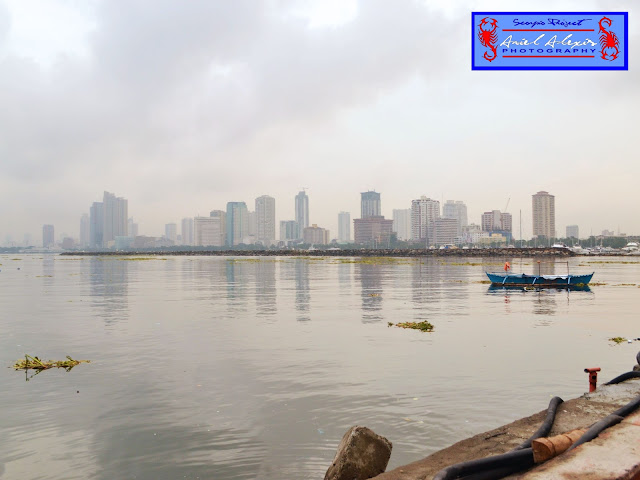 |
| A hazy Manila Bay as seen from Esplanade Seaside Park at the MOA Complex |
 |
 |
 |
 |
 |
 |
 |
 |
| MOA Eye at night |
 |
| A live concert at San Miguel by the Bay |
 Harbour Square
Harbour SquareJust a stone’s throw away from MOA, Harbour Square offers you a good view of the bay, a cool sea breeze, and several popular food chains where diners can settle for a nice place to have breakfast, lunch or dinner. The square offers a veritable alternative when other nearby venues seem too chaotic already. There, you can just sit back, relax and cast your blues away.
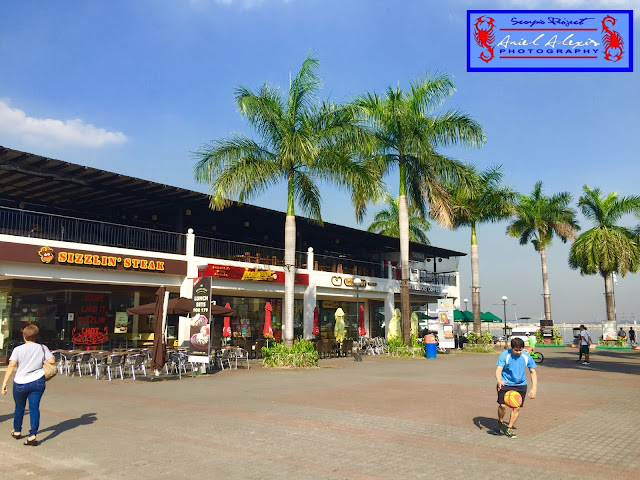 |
 |

 On those occasions I passed time in the city, I forgot the ticking of the clock and ended up just savoring the moments spent in that escapist’s paradise. In some sense, the time I “wasted” in the city has helped expand the boundaries of what I thought was possible. As John Lennon aptly put it: “Time you enjoy wasting was not wasted.”
On those occasions I passed time in the city, I forgot the ticking of the clock and ended up just savoring the moments spent in that escapist’s paradise. In some sense, the time I “wasted” in the city has helped expand the boundaries of what I thought was possible. As John Lennon aptly put it: “Time you enjoy wasting was not wasted.” |
| Manila Bay as seen from Harbour Square, one of Pasay's famous watering holes |
And here’s
one thing I definitely gained from my wandering in Pasay: that somewhere between
my heart and that city by the bay, after all the meanderings, the confusion and
pandemonium, the sunburn, the sweat and thirst, my sore feet, aching muscles
and all, I successfully scoured one more slice of paradise in this wide, wild universe
of ours where I’m just a tiny speck—and stumbled upon a little bit of bliss, albeit
for a short time. Truly, not all those who wander are lost. 🤣 🤣
🤣





















No comments:
Post a Comment